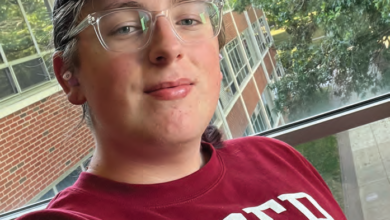Taylor Swift & queerness: the confines of celebrity
By Kaitlyn McCormick
Singer-songwriter Taylor Swift’s work has consistently prompted speculations of queerness, but the announcement of a new song titled “Lavender Haze” has resulted in fervent accusations of “queerbating” from many fans — and they may have a point.
One faction of Swift’s following, dubbed the “gaylors,” has been speculating her ties with the LGBTQ+ community for years, citing evidence such as seemingly queer lyrics and a series of close friendships with celebrities like supermodel Karlie Kloss and actress Diana Agron. However, the gaylors have come to a boiling point following the most recent explanation of Swift’s first track
“Lavender Haze,” announced off of her album “Midnights,” set to debut Oct. 21.
Swift explained in an Instagram video posted Oct. 7 that the track title was inspired by a “Mad Men” episode, which prompted her to research the term and its meaning, finding that it was apparently a phrase used in the ’50s to describe being in love and having that “all-encompassing love glow.”
“If the world finds out that you’re in love with somebody, they’re gonna weigh in on it,” Swift said. “Like my relationship for six years; we’ve had to dodge weird rumors, tabloid stuff, and we just ignore it.”
Many queer fans, subsequently, were dismayed after hearing what they know to be a historically queer symbol attributed and connected to Taylor’s straight-presenting relationship. Lavender and its ties to queer history notably includes the Lavender Scare in the ’50s, as well as the 1969 term “Lavender Menace,” coined by Betty Friedan, a National Organization for Women co-founder who believed that lesbian representation would hurt the goal of the feminist movement at the time. Even colleges and universities across the country (including Rider) host Lavender Graduations for their queer students.
I find it hard to believe that Swift, who has an eye for symbolism and often recalls well-known phrases and literary allusions in her work, would have zero knowledge of lavender being a queer symbol, especially after having her identity consistently speculated in the public sphere, but maybe ignorance is just the most convenient explanation. This most recent chronicle in the gaylor series brings to light a bigger conversation about the ways celebrities interact with queerness and the ways audiences interact with celebrities.
As a queer woman, I would hope it goes without saying that if Swift were intentionally using queer themes and queer symbols inauthentically on the sole basis of exploiting queer listeners, there is no doubt that that would be deserving of backlash. But who are we to speculate her identity, and why should people feel entitled to an answer?
There is a fine line, especially in the ways social media is utilized to consistently analyze and pick apart celebrity identities, between having a curiosity or desiring to see representation from a favorite artist and conjuring up a delusion of sorts about the identity of a person that you do not know.
We have developed a culture of parasocial relationships with celebrities and also assigned so much meaning to them and their work that when they do not live up to the pedestals we’ve placed them on, there is no other emotion to feel than anger and dismay.
This “Lavender Haze” fiasco seems, albeit, like a flop brought on by general ignorance and apathy of queer history, but I think it can still be argued that it makes sense that queer listeners would pick up so quickly on any subtext of queerness. Audiences do, after all, make meaning of the work presented to them, colored by their own personal experiences, regardless of the artist’s original intent.
Purposeful misrepresentations of queerness are wrong on all fronts, which is why the best way to find explicitly queer representation through music is to listen to and support openly queer artists.



